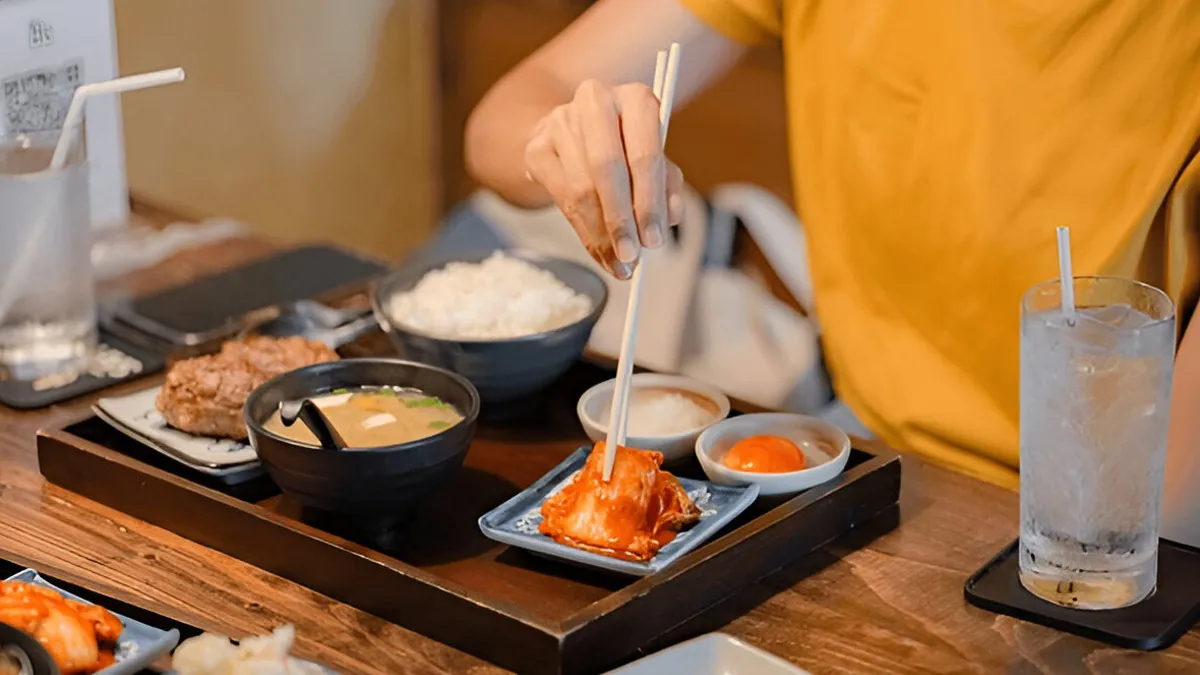
Best Korean Superfoods: Korean food isn’t just about taste, it’s deeply connected to health and balance. When it comes to wellness, Koreans have long embraced the philosophy that food is medicine. Rooted in centuries of tradition, Korean cuisine blends taste and healing in every bite, whether it’s a bowl of comforting seaweed soup or a spoonful of fermented soybean stew.
These everyday superfoods, from kimchi to hanyak (traditional herbal remedy), offer more than just flavour, they support gut health, boost energy, and promote overall well-being, naturally. Here are some Korean wellness superfoods that can naturally boost your health and bring balance to your daily routine.
Kimchi, Korea’s most iconic dish, is a fermented mix of cabbage or radish seasoned with garlic, chilli, and ginger. It’s packed with probiotics that support gut health, along with vitamins A, C, and B. The National Institutes of Health (NIH) study states, “Accordingly, kimchi can be considered a vegetable probiotic food that contributes health benefits in a similar manner as yoghurt as a dairy probiotic food.”

Regularly eating kimchi may help improve digestion, reduce inflammation, and support immunity, making it a smart and tasty addition to your meals.
Doenjang, a savoury fermented soybean paste, is used in stews and marinades. It’s rich in plant-based protein, minerals, and gut-friendly bacteria. The National Institutes of Health (NIH) study states, “Doenjang has been reported to exhibit antioxidant, fibrinolytic, antimutagenic, anticancer, and antiobesity effects.”
Because of the fermentation process, it also contains beneficial enzymes and compounds that may reduce belly fat and inflammation while aiding digestion.
Seaweed like gim (nori) and miyeok (sea mustard) are everyday staples in Korean kitchens. These dried edible seaweeds are full of iodine, calcium, omega-3s, and fibre, great for thyroid support, bone strength, and glowing skin.

Whether eaten as a snack or in soups, seaweed adds both flavour and natural nutrition.
Don't miss: 7 Benefits of Applying Magnesium Oil to Your Feet Every Night, According to a Nutritionist
Korean ginseng is one of the most treasured wellness ingredients, known for boosting energy, focus, and immunity. This adaptogenic root has been used for centuries to reduce fatigue and increase resilience to stress. Ginseng is a medicinal plant widely used for the treatment of various conditions.

“The pharmacological effects of ginseng have been demonstrated in cancer, diabetes, cardiovascular diseases and have been used for promoting immune function, central nervous system (CNS) function, relieving stress, and for its antioxidant activities”, as reported by the National Institutes of Health.
Ginseng is often brewed into Ginseng tea (insam-cha) or used in stews during times of weakness or recovery, especially in traditional Korean medicine.
Don't miss: The Silent Strain: How Hepatitis B & C Linger Without Symptoms
Korean Green Tea is often considered a superfood due to its high antioxidant content and numerous health benefits. It's known as ‘Nokcha’ in Korean and is a popular beverage with a rich history and unique processing methods that contribute to its distinct flavor and potential health advantages.

According to a 2006 study, Catechin compounds from Korean green tea as potential sources of anticancer and antioxidant components were target materials in this work.
Studies suggest it may play a role in combating oxidative stress, supporting cardiovascular health, and potentially offering anti-cancer and anti-aging effects
By adding superfoods to your diet, you bring balance, nourishment to your everyday meals. Make sure to consult your dietitian before adding them to your diet.
For more such stories, stay tuned to HerZindagi.
Image credit: Freepik
Also watch this video
Herzindagi video
Our aim is to provide accurate, safe and expert verified information through our articles and social media handles. The remedies, advice and tips mentioned here are for general information only. Please consult your expert before trying any kind of health, beauty, life hacks or astrology related tips. For any feedback or complaint, contact us at [email protected].